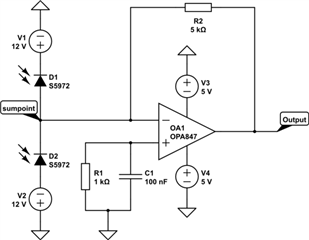Other Parts Discussed in Thread: OPA830, OPA817
Hi Experts,
We are wondering if this transimpedance op-amp performs differential amplification for a low input impedance signal? We are planning to use it with bipolar electrode.
Would this will work?
Thank you.
Regards,
Archie A.



